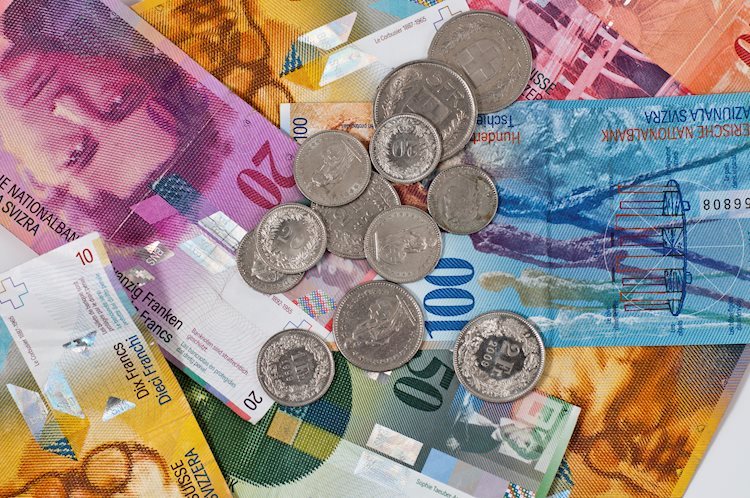- USD/CHF rises due to rising odds of fewer rate cuts by the Federal Reserve next year.
- The Fed revised its 2025 projections, now anticipating only two rate cuts, down from the previously forecasted four.
- The Swiss Franc may depreciate as SNB President Martin Schlegel suggested that interest rates might dip below zero.
USD/CHF recovers its recent losses from the last two sessions amid thin trading activity following the Christmas holiday, trading around 0.9000 during the European hours on Friday. This upside of the USD/CHF pair could be attributed to a stronger US Dollar (USD), driven by growing expectations of fewer rate cuts by the US Federal Reserve (Fed).
In its December meeting, the Fed reduced interest rates by a quarter point and revised its 2025 projection to include only two rate cuts, down from the previously forecasted four. However, the likelihood of additional rate cuts next year was tempered by moderate US PCE inflation data.
The US Dollar Index (DXY), which measures the value of the US Dollar (USD) against its six major peers, trades above 108.00, slightly below its highest level since November 2022. However, the upside of the Greenback could be restrained as US Treasury bond yields remain subdued on Friday. 2-year and 10-year yields stand at 4.33% and 4.58%, respectively, at the time of writing.
The USD/CHF pair faced headwinds as the Swiss Franc (CHF) strengthened following the release of Swiss GDP data, which indicated stronger-than-expected economic growth and an acceleration in Q3 on a year-over-year basis. However, recent remarks from Swiss National Bank President Martin Schlegel, suggesting that interest rates in Switzerland might dip below zero, remain fresh in traders’ minds.
Swiss Franc FAQs
The Swiss Franc (CHF) is Switzerland’s official currency. It is among the top ten most traded currencies globally, reaching volumes that well exceed the size of the Swiss economy. Its value is determined by the broad market sentiment, the country’s economic health or action taken by the Swiss National Bank (SNB), among other factors. Between 2011 and 2015, the Swiss Franc was pegged to the Euro (EUR). The peg was abruptly removed, resulting in a more than 20% increase in the Franc’s value, causing a turmoil in markets. Even though the peg isn’t in force anymore, CHF fortunes tend to be highly correlated with the Euro ones due to the high dependency of the Swiss economy on the neighboring Eurozone.
The Swiss Franc (CHF) is considered a safe-haven asset, or a currency that investors tend to buy in times of market stress. This is due to the perceived status of Switzerland in the world: a stable economy, a strong export sector, big central bank reserves or a longstanding political stance towards neutrality in global conflicts make the country’s currency a good choice for investors fleeing from risks. Turbulent times are likely to strengthen CHF value against other currencies that are seen as more risky to invest in.
The Swiss National Bank (SNB) meets four times a year – once every quarter, less than other major central banks – to decide on monetary policy. The bank aims for an annual inflation rate of less than 2%. When inflation is above target or forecasted to be above target in the foreseeable future, the bank will attempt to tame price growth by raising its policy rate. Higher interest rates are generally positive for the Swiss Franc (CHF) as they lead to higher yields, making the country a more attractive place for investors. On the contrary, lower interest rates tend to weaken CHF.
Macroeconomic data releases in Switzerland are key to assessing the state of the economy and can impact the Swiss Franc’s (CHF) valuation. The Swiss economy is broadly stable, but any sudden change in economic growth, inflation, current account or the central bank’s currency reserves have the potential to trigger moves in CHF. Generally, high economic growth, low unemployment and high confidence are good for CHF. Conversely, if economic data points to weakening momentum, CHF is likely to depreciate.
As a small and open economy, Switzerland is heavily dependent on the health of the neighboring Eurozone economies. The broader European Union is Switzerland’s main economic partner and a key political ally, so macroeconomic and monetary policy stability in the Eurozone is essential for Switzerland and, thus, for the Swiss Franc (CHF). With such dependency, some models suggest that the correlation between the fortunes of the Euro (EUR) and the CHF is more than 90%, or close to perfect.


